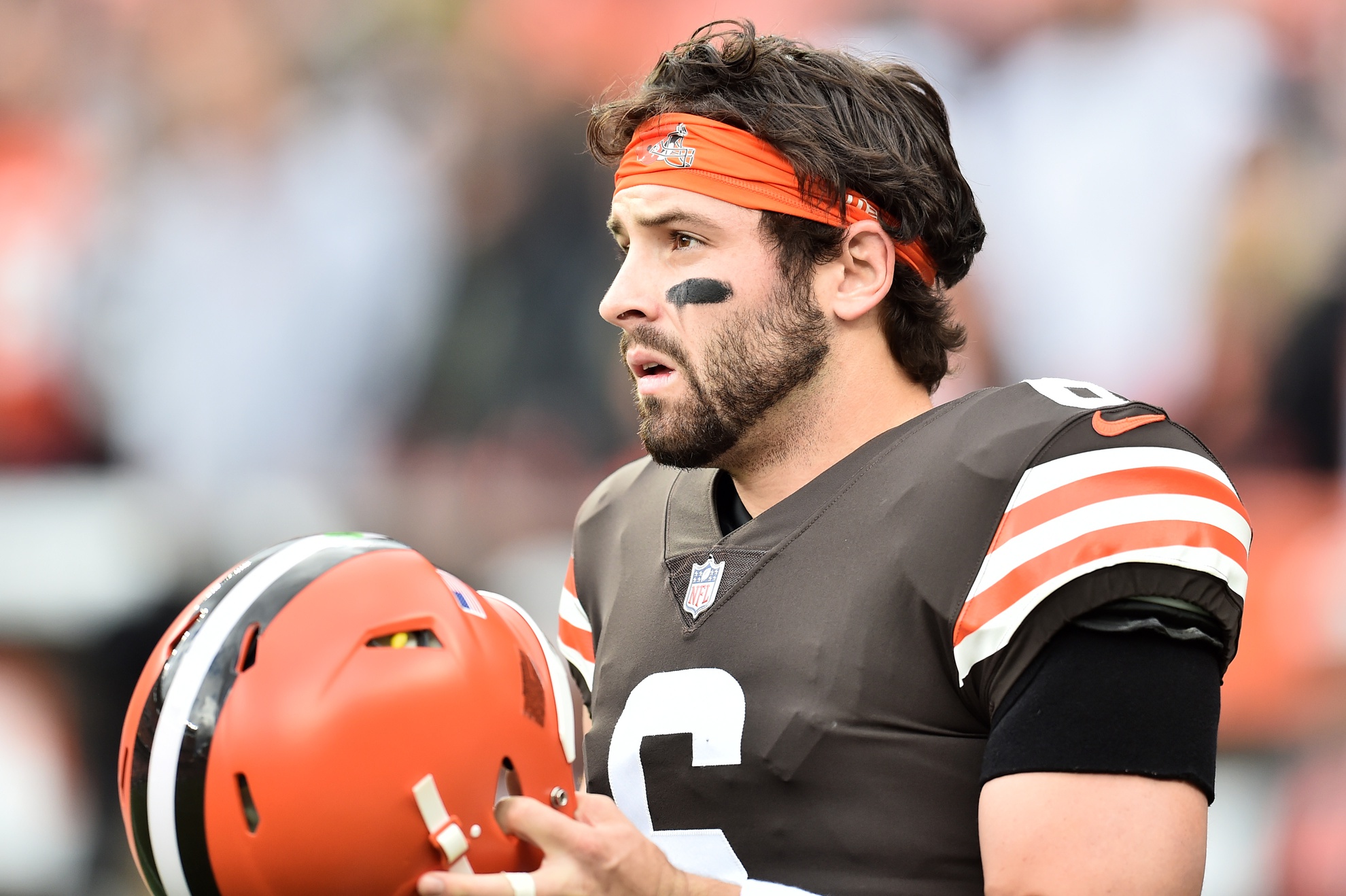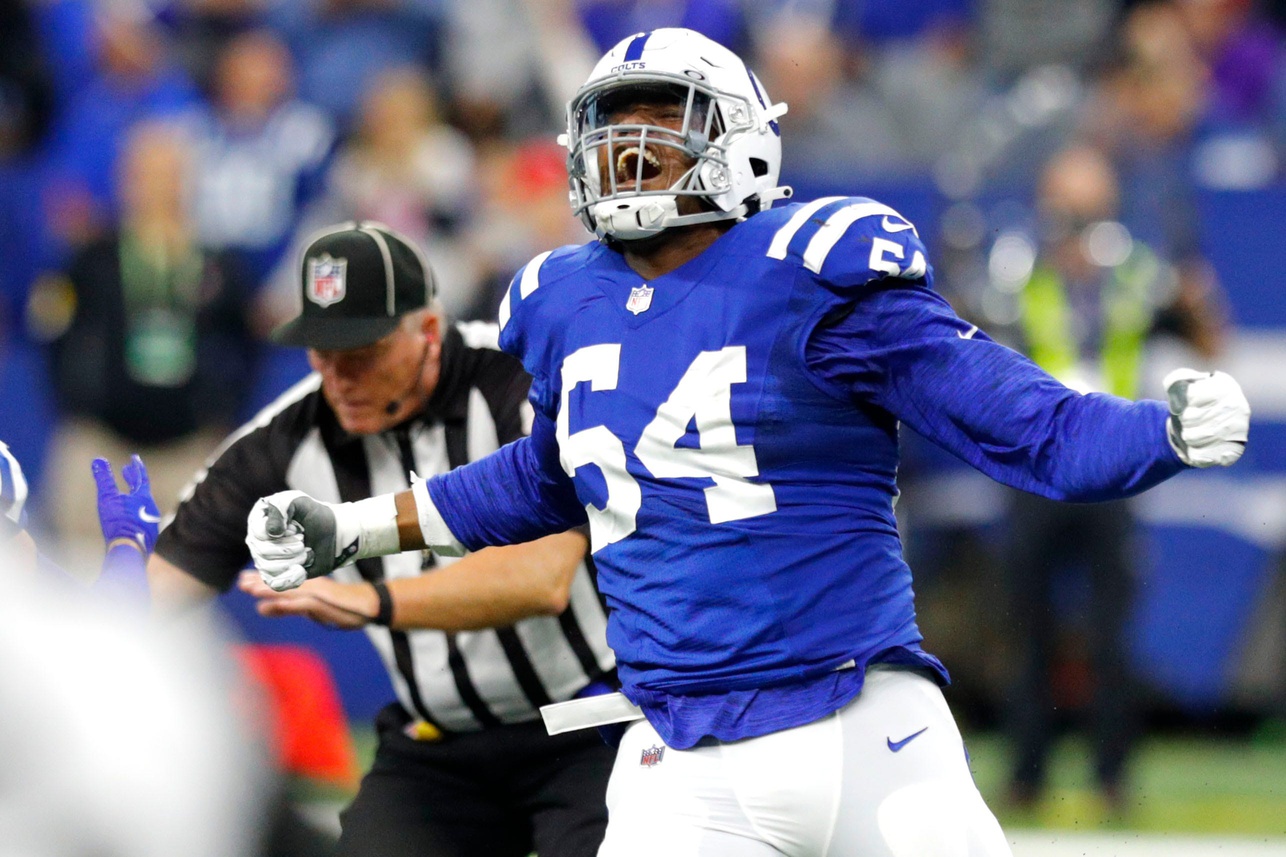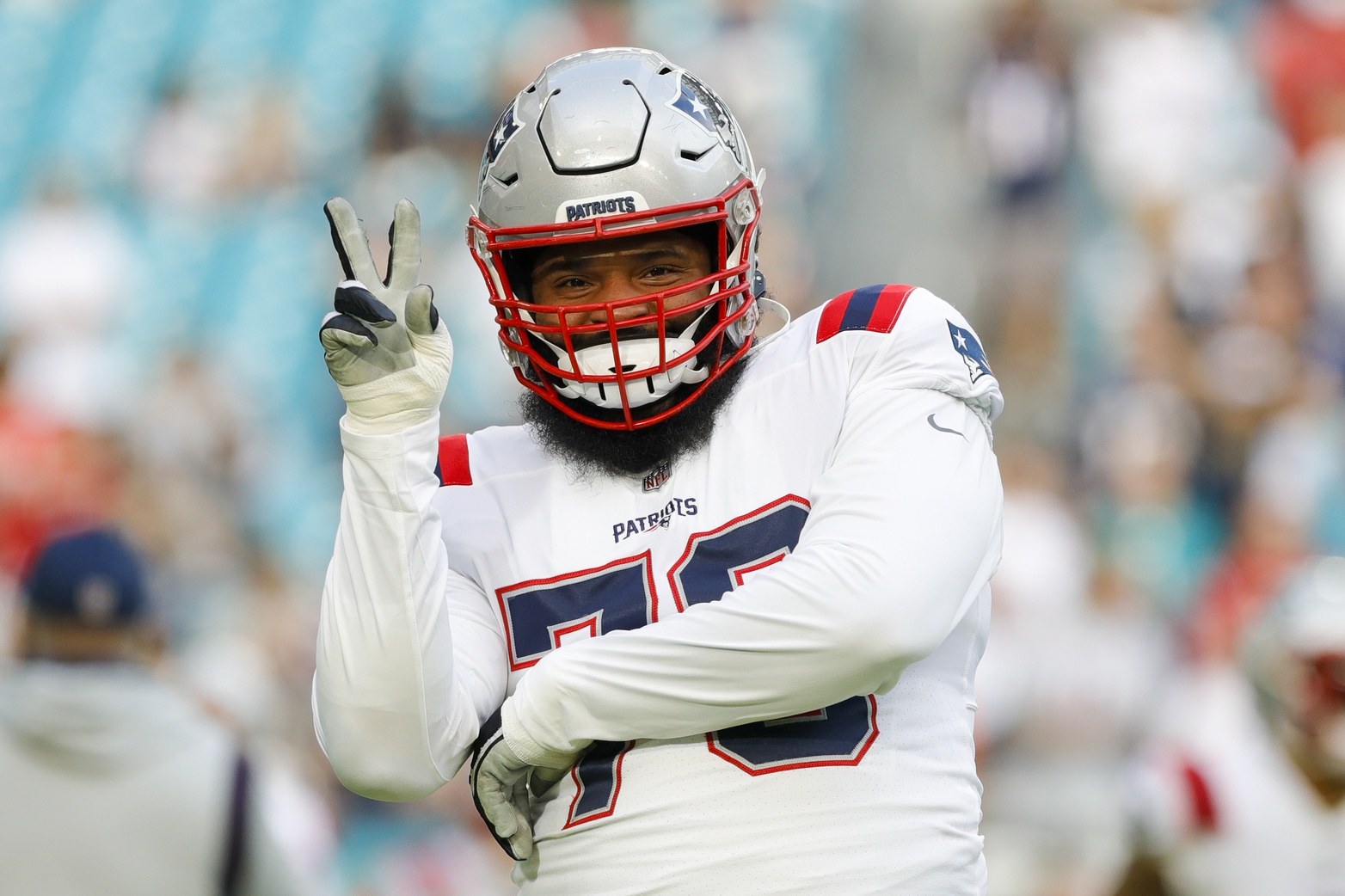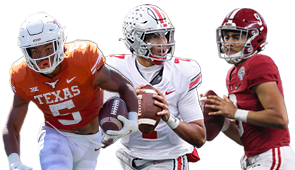The latest quarterback saga across the NFL has finally come to a conclusion. Former No. 1 overall pick Baker Mayfield was traded to the Carolina Panthers for a 2024 draft choice last week. The “will they, won’t they?” dance between Carolina and Mayfield has been a long and winding path, one that was nearly derailed by financial details as the Cleveland Browns and Panthers were apparently ready to come to this conclusion months ago at the 2022 NFL Draft, only for the specifics of Mayfield’s scheduled pay to burst the bubble.
Mayfield was scheduled to play the year on the fifth-year option of his rookie deal—a fully guaranteed chunk of coin worth north of $19M in 2022. And with the Panthers knowing all too well the hardship that an ill-timed fifth-year option on a quarterback can bring (more on Sam Darnold in a minute), the team was well within their rights to push back against spending even more dollars into a quarterback room that has been a money suck from the moment Dave Tepper and Matt Rhule arrived on the scene in Charlotte.
With Mayfield’s deal done but the Browns paying some $10.5M of that scheduled $19M salary in order to get him off the roster, it is well worth discussing the ultimate decision to exercise Mayfield’s fifth-year option last offseason and the implications of teams who choose to make this kind of decision without the conviction in their quarterback to see those years of the contract through. Allow me to have your ears for a moment:
The current iteration of the fifth-year option is a less appealing strategic tool for NFL franchises to implement than ever before, particularly at the quarterback position. As dictated by the NFL and NFLPA’s collective bargaining agreement, there are four tiers of compensation for fifth-year options on rookie contracts:
- Tier 1: Basic (No play time or player honor accolades met, pay measurable to 3rd through 25th highest salaries at respective player’s position over the last five seasons)
- Tier 2: Playtime (Player meets one of several criteria for playing time, pay measurable to 3rd through 20th highest salaries at respective player’s position over the last five seasons)
- Tier 3: Pro Bowl Honor (Player makes one Pro Bowl over initial contract, pay measurable to value of that season’s Transition Tag at respective position)
- Tier 4: 2+ Pro Bowl Honors (Player makes multiple Pro Bowls over initial contract, pay measurable to value of that season’s Franchise Tag at respective position)
The pay scale pushes upward to culminate with the cost teams would be paying for a non-negotiable, fully guaranteed one-year contract with the franchise tag and transition tag cost once players receive Pro Bowl honor(s) anyway. And any young quarterback getting that kind of recognition is a lock to receive the fifth-year option and an even better lock to never play a snap of it. If you’re a Pro Bowl quarterback within the first three years of your play in the NFL, you’re getting a contract extension! Unless…you know…you don’t want to sign it (CC: Lamar Jackson and maybe Kyler Murray?).
Coveting seven years of contractual control versus six (which you may have for every other player in the league if you absolutely want it) when standard business procedures in the NFL warrant player contract extensions well before the end of year five is a misappropriation of attention and energy.
We’ve seen two NFL Draft classes come through under this current iteration of the NFL’s Collective Bargaining Agreement, which added tiers of compensation to a rookie contract for fifth-year options. The 2018 NFL Draft class, which housed Mayfield and Darnold, saw 21 of 32 picks have their fifth-year option picked up, including four of the five drafted quarterbacks.
- No. 1 overall: Baker Mayfield, Cleveland Browns (option worth $18.8M exercised)
- No. 3 overall: Sam Darnold, New York Jets (option worth $18.8M exercised by CAR)
- No. 7 overall: Josh Allen, Buffalo Bills (option worth $23.1M exercised)
- No. 11 overall: Josh Rosen, Arizona Cardinals (contract terminated)
- No. 32 overall: Lamar Jackson, Baltimore Ravens (option worth $23.1M exercised)
Mayfield and Darnold now share the quarterback room in Carolina, while Rosen is an unsigned free agent after time in Arizona, Miami, Tampa Bay, and San Francisco. Of the two players with their original teams, Allen signed a six-year, $258M contract extension before taking a snap in year four, let alone year five. He’s under contract through the end of 2028. Jackson, on the other hand, has received ample overtures from the Ravens about a new contract, but he’s been reportedly resistant to sign. There have been discussions throughout the offseason between the two sides, but these talks have been going on for more than a year now. ESPN’s Dan Graziano reported 12 months ago that Jackson was expected to get his extension FIRST among the 2018 first-round quarterbacks and that the financial expectations were in excess of $40M per season. The effort has been made in a timely manner.
The 2019 class saw the number of fifth-year options dip to 19 and just one of the two quarterbacks selected (Murray). Among the declined options includes a key decision by the New York Giants to avoid the same pitfall that the Browns and Panthers got swept up in the prior year: the Giants passed on a fifth-year option for QB Daniel Jones that would have cost nearly $22.5M for the 2023 season. Jones, who was the No. 6 pick in the 2019 NFL Draft, has not qualified for the upper echelon of fifth-year option payment tiers, the same as Mayfield the year prior when Cleveland activated his fifth-year option.
So Jones will enter his “prove-it year” with the Giants in 2022 on the final year of his contract, owed $3.99M in salary and carrying a salary cap hit of just over $8.3M on the year. When the dust settles, Jones will have either played his way out of New York, in which case the Giants will bid him farewell and *maybe* get a compensatory pick for their troubles down the road—that, of course, depends on their net spending in 2023. Or, alternatively, Jones could play his way into a new deal, one in which the Giants could come to the negotiating table in the winter and try to hammer out a team-friendly deal worth cheaper than $22M per season fully guaranteed while citing his inconsistent resume.
Suppose Jones scoffs? The Giants will always have the franchise tag in their back pocket, which is projected to be in the ballpark of $31.5M in the upcoming year for 2023.
So the question begs to be asked: is the flexibility of not getting locked into an albatross fully guaranteed fifth-year option contract (like Mayfield’s) worth the potential risk of losing one of your three remaining potential seasons of fully guaranteed player control for any team that wanted to fully flex their CBA rights (fifth-year option and two franchise tags are at their disposal)?
At a potential cost of $9M if the player balls out and makes you eat your words while forcing your hand to re-up on a commitment to them, I think I’d rather have the flexibility and pass on the option. Because here’s the thing: Tier 1 and Tier 2 pay for the current iteration of fifth-year options is based on the “third to 25th” and “third to 20th” highest-paid players at your respective position over the course of the last five seasons. This ranges from elite to “lower tier” of NFL quarterback pay—there is only a marginal middle class that most young quarterbacks who haven’t proven themselves would warrant compensation measurable to. The third highest AAV for 2022 is Patrick Mahomes’ $45M per year. Murray’s current rookie contract, at $8.7M per year, ranks 20th. There are nearly as many NFL quarterbacks making $40M per year or more (7) as there are making between $39M and $20M (8), and the 16th-highest-ranked AAV salary, a.k.a. the next in line, is Jameis Winston’s two-year deal worth just $14M per season.
For quarterbacks specifically, the range of pay for Tier 1 and Tier 2 salaries taps too far up the ladder for the NFL’s elite pay at the premier position and makes it an illogical move for just about any fringe quarterback to receive. Tier 3 and Tier 4 option players? Absolutely. They’ve taken the steps needed with their performance to justify the pay and teams should have much more confidence in who they’re going to continue to be as NFL players. Fire away with that fifth-year option—and be quick to lock in that contract extension while you’re at it—as the Chiefs did with Patrick Mahomes and as the Bills did with Josh Allen. I’d expect it won’t be too long before we see Justin Herbert and Joe Burrow join that list next offseason as players who have their option exercised just to sign a contract extension or players who have the extension bypassed altogether in order to go straight to a second contract to lock their financials in long-term. Neither Burrow nor Herbert is eligible for a new contract until after the 2022 season.
Tier 1 and Tier 2 quarterbacks getting their fifth-year options picked up is an unappealing activation for yours truly. I’d rather wear egg on my face and pay more for a guaranteed fifth year via the franchise tag for a player who proves me wrong in year four than lock in the fifth year of a fully-guaranteed “middle class” salary a year in advance just for no progression to take place and be stuck with a contract no one wants to absorb. That’s exactly the path the Browns found themselves on and a path the New York Jets narrowly avoided by trading Darnold ahead of the decision on his fifth-year option. The Panthers, however, will now have an $18.8M backup quarterback this season in Darnold unless he’s able to beat Mayfield in a competition after hastily acting on the option the moment they got Darnold in the door.
Cleveland, meanwhile, deserves some criticism for locking Mayfield into a fifth-year option on the heels of 2020 only to so quickly conduct an about-face and pull the plug. The finer details of their succession plan are, well, another story altogether. The high variance of play for Mayfield wasn’t enough of a flag to tip the Browns to be more conservative with his contract, and now they’ll carry $10M in dead cap for their efforts. The “salary cap is fake” crowd will happily point to how easily manipulated the cap can be to minimize that impact. And sure, the cap ramifications can be marginalized. But Jimmy Haslam is still writing Baker Mayfield a $10.5M check to not play football for the Browns this year just 12 months after the team decided to make the commitment on the heels of an 11-win season and a playoff win.
It’s perfectly fine to want better quarterback play. But if you were this leery of Mayfield’s viability at quarterback, what was your process like to come to the decision to serve him up a fully-guaranteed fifth-year option in the first place?
Looking forward, the next group of quarterbacks squarely in the crosshairs of Tier 1 or Tier 2 fifth-year option decisions currently reside in Cincinnati, Miami, and Green Bay—Herbert has already made a Pro Bowl, so he’s elevated into Tier 3 going into year three. Burrow, believe it or not, was left off the Pro Bowl roster in 2021 and therefore only is on target to be a Tier 2 option as of right now—a healthy reminder that there are no blanket statements in this business, as Burrow is a no-brainer option to exercise despite currently being a Tier 2 player.
Tua Tagovailoa and Miami are also on pace for a Tier 2 decision with the fifth-year option. This decision mirrors much more closely the choice Cleveland needed to make with Mayfield—there has been no Super Bowl run, nor has there been a 4,600-yard passing season. Miami has done well to build up around their quarterback amid a head coaching change in an effort to get some clarity on this front. And even if Tagovailoa plays well, it is hard to envision him in a run-heavy offense producing the kind of numbers that would warrant an original Pro Bowl designation ahead of the likes of Mahomes, Allen, Burrow, Herbert, Jackson, Russell Wilson, and others. Perception is a bigger factor in such player honors than we’d care to admit and the perception of Tagovailoa needs a big year to change the narrative—and Pro Bowl honors usually come a year later than they’re deserved.
Meanwhile, in Green Bay, Jordan Love feels more and more like a potential trade candidate after the Aaron Rodgers succession plan has devolved into the Aaron Rodgers MVP tour the last two seasons. Love appears set to stay put this season, meaning any team that would be trading for and acquiring Love would be doing so with absolutely zero evidence of who he is as a player. While the Panthers seemed perfectly happy to activate their option on Darnold while having no clue who he was as a player, I wouldn’t recommend it. I’m sure the Panthers wouldn’t in hindsight either, given that they’re on the hook for the nearly $19M they committed to while adding two additional quarterbacks to the room in the last four months. Don’t you dare put a fifth-year option in place for Love if you trade for him next offseason.
In all, I’d advocate for a growing divide in young NFL quarterbacks. It’s only fitting, given that the NFL is a quarterback-driven league and the discussion points for all 32 teams so often fall back to a simple phrase: “Either you’ve got a quarterback or you need one.”
It’s an absolute that should warrant some credence in making contractual decisions with the position as well. Either you’ve got a quarterback who deserves a new contract well before their fifth season, or you have a quarterback problem that needs to be addressed. And if you find yourself with a quarterback problem, locking in your incumbent player for a middle-class, fully-guaranteed salary at the position is hardly ever going to be the “right” way to solve it.
Will there be exceptions? Surely. But the broader scope of quarterback options on rookie contracts can most times be boiled down to two sides of the same coin, for better or for worse: You won’t need it.
Filed In
Related Articles
NFL
Dayo Odeyingbo Looks Healthy, Ready To Wreak Havoc For Colts
- Aug 22, 2022
NFL
3 Teams That Should Trade For Isaiah Wynn
- Aug 22, 2022
Written By




































